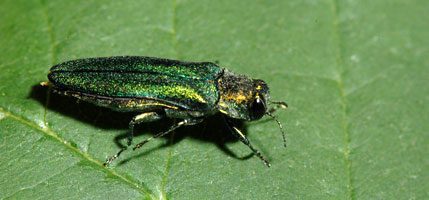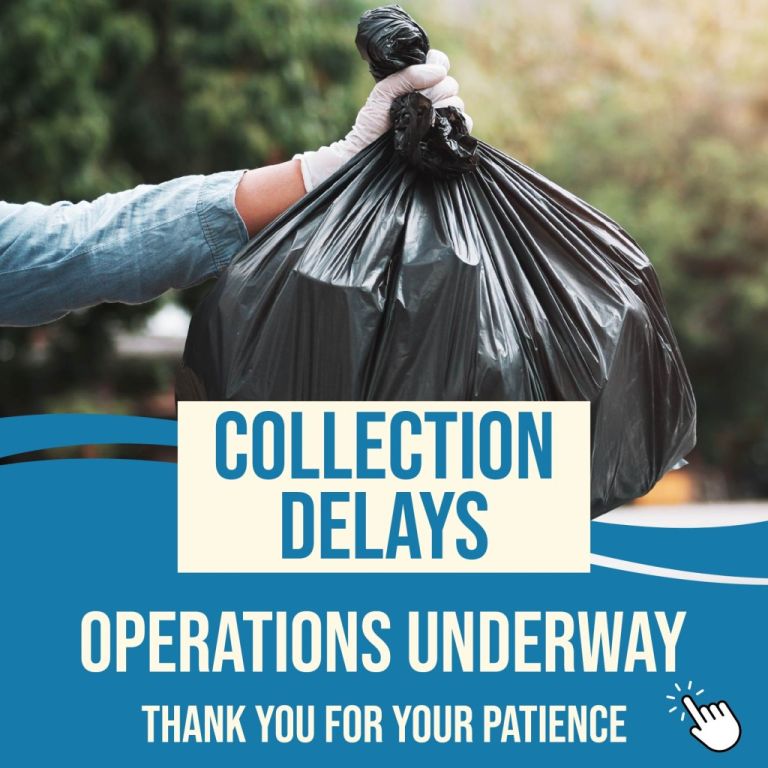Owner's guide to the fight against emerald ash borer
To reduce the threat of emerald ash borer in Dollard-des-Ormeaux, residents are advised to take the following measures:

To counter the emerald ash borer threat, Dollard-des-Ormeaux residents are advised to:
- Identify ash trees on your property
- Understand how the emerald ash borer works
- Consider preventive biopesticide treatment
- Understand the appropriate courses of action for the felling
- Plan for the replanting of alternate species of tree(s) to replace the felled ash tree
- Subsidy for ash trees
1. Identifying ash trees on your property
Ash trees are plentiful and make up approximately 15% to 30% of Dollard-des-Ormeaux’s urban forest.
Ash trees can be identified by their leaf configuration and bark texture.
Ash leaves and branches grow opposite each other on the stem.
The bark of a mature ash tree has a coarse diamond-patterned texture.
For more information on identifying ash trees, consult the following sites:
If you are unsure whether you have an ash tree on your property, email at arbo@ddo.qc.ca or call Public Works (514-684-1034) and an inspector will visit you to help you identify the tree(s) in question.
2. Understanding how the emerald ash borer works
The emerald ash borer, Agrilus planipennis, is an invasive insect species that was first found in North America in the Detroit area in June 2002. For further information:
In 2002, the emerald ash borer was discovered in the Detroit, Michigan area and has since spread to cover the majority of the Great Lakes region and the St. Lawrence valley corridor.
The threat
The emerald ash borer is able to attack and kill healthy ash trees, regardless of variety.
Ash trees of all sizes are susceptible to this threat. Larvae have been found in branches as small as 1.1 cm in diameter.
Emerald ash borer infestation is very difficult to detect early. When infested trees are found, it’s often one year or more after the attack has occurred. Additionally, there are several other factors affecting ash tree health that may disguise the presence of the emerald ash borer.
Estimates show the emerald ash borer has killed several hundred thousand ash trees in Essex County, Ontario, and 8 to 10 million ash trees in southeastern Michigan. Tree losses include landscape, rural and woodlot trees. If not effectively controlled, the emerald ash borer is expected to spread across the entire North American range of ash, causing widespread tree mortality.
Four signs of infestation
- Crown dieback: the first sign of emerald ash borer infestation is thinning or dieback of the outermost extremities of the crown of the ash tree due to the effect of the under-bark larvae choking off nutrient flow.
- New growth shoots around the trunk of the ash treeShoots (suckers) can be seen growing around the portion of the trunk lower than the larval infestation as the tree attempts to survive.
- Presence of D-shaped exit holes: as the young adult emerald ash borer emerges from under the ash tree’s bark, it creates a D-shaped hole in the bark approximately 4 mm (3/16″) wide.
- Woodpeckers: they are very good at finding larvae under the bark. Increased woodpecker feeding activity in your ash tree could point to infestation of the tree by the emerald ash borer.
The emerald ash borer’s affected area changes as the advancement of the pest progresses. View Canadian Food Inspection Agency (CFIA) updates on affected emerald ash borer areas.
3. Consider preventive biopesticide treatment
Generally speaking, if your tree shows no symptoms or only early symptoms of infestation, it can be treated to prevent and/or slow the effects of infestation.
Currently, the only effective preventive treatment for emerald ash borer infestation that is approved in Canada is the natural pesticide TreeAzin®, which is applied every two years for the duration of the infestation threat.
Application involves the injection of the product into the ash tree at several injection points around the base of the trunk by a trained technician.
Who is authorized to apply TreeAzin® in the Montreal area? There are dozens of certified TreeAzin® service providers in the Montreal area. Use the BioForest Technologies Inc. service provider search resource.
The cost of treatment is typically less than the cost of felling a mature tree.
4. Felling and disposing of ash trees
If treatment is not an option for your private ash tree because it is dying, we ask that you understand and undertake the appropriate courses of action for the elimination of the dying ash tree from your property.
Do not leave yourself open to injury, damages to your property or claims from third parties, as dead trees become a public danger. Email at arbo@ddo.qc.ca or call Public Works (514-684-1034) for further information on tree felling and disposing of ash trees and its wood.
5. Plan for the replanting of alternate species of trees to replace the felled ash trees
According to city regulations, any tree felled by more than 10 cm must be replaced if space permits. Whether for an ash tree or any other species, the felling certificate is conditional on the planting of a new tree. In the case of an ash tree, you can choose between two subsidy programs:
- The City of Dollard-des-Ormeaux, in collaboration with the non-profit organization GRAME, offers a subsidy to homeowners for the replacement of felled trees (click on the link).
- If you wish to choose a species other than those proposed by GRAME, the City also offers a subsidy for the replacement of ash trees. The replacement tree must have a trunk diameter equal to or greater than 2.5 cm at planting, or in the case of a conifer, have a height of 1.5 m, reach a minimum of 5 m at maturity and respect the other conditions and provisions in accordance with current regulations.
6. Subsidy for ash trees
A cash subsidy is available to homeowners who wish to treat an ash tree with TreeAzin, remove an ash tree and replace it on their residential property. This subsidy is paid to homeowners after they have provided proof that the work has been carried out in accordance with the Règlement sur l’entretien et la protection des arbres (R-2007-023). The contractor carrying out the work must be registered with the Registraire des entreprises du Québec.
To obtain the cash subsidy:
- Contact the City’s Arboriculture Department to schedule a meeting with an inspector who will determine whether the tree is healthy enough for TreeAzin treatment. If not, a certificate of authorization for tree removal will be issued on site.
- Fill in the form given to you by the inspector and attach the associated invoices. You must sign the form and the invoices.
- Mail the grant form and invoices to:
Services de Ressources Financières, 12001, boulevard De Salaberry, Dollard-des-Ormeaux (Québec) H9B 2A7 - You will receive a cheque by mail.
TreeAzin treatment
Subsidy: 50% reimbursement of the costs up to a maximum of $1,000 par address, per year.
Ash tree felling
Subsidy: 25% reimbursement of the costs up to a maximum of $200 par ash tree and a maximum of $2,000 per address.
Ash tree replacement
Subsidy: $75 per ash tree to be replaced and up to a maximum of $750 par address.
